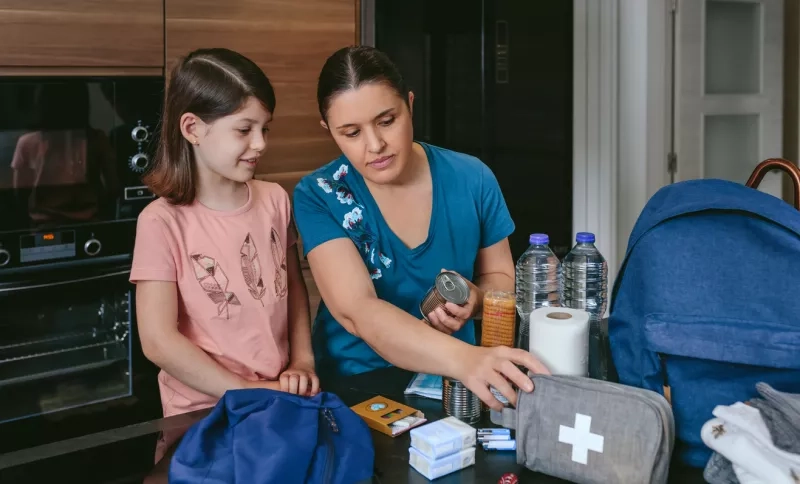
What to prepare for extreme weather
2 Minute Read
Mother Nature doesn’t care about your weekend plans. Extreme weather events are rising across Canada and beyond, from intense summer storms to record-breaking snowfalls.
The City of Ottawa predicts dramatic changes to long-term season and weather patterns in Eastern Ontario over the next 25 years, and the effects are already being felt. Weather emergencies are becoming more common, but with some preparation, you can help keep your household safe and ready for anything.
What to prepare

The first step in staying safe is ensuring you have the right essentials. Start by putting together an emergency kit.
The first step to staying safe is having the right essentials ready. Every household should have a 72-hour emergency kit with basics for a crisis. Include water, non-perishable food, and a manual can opener. Keep a flashlight with extra batteries and a crank or battery-operated radio for alerts. A portable power bank can keep your phone charged. Add a first aid kit, medications, and spare glasses or contacts. Pack sturdy clothing, footwear, blankets, or sleeping bags to stay warm and dry. Don’t forget hygiene items like toilet paper and personal supplies. If you have pets, include their food, leash and other necessities.
Preparedness goes beyond supplies. Have a simple evacuation plan for your home, workplace, children’s schools, or other places you visit frequently. Help your family understand and practice these plans so everyone knows what to do. It’s also smart to pick a clear, easy-to-find meeting spot if you get separated during an emergency.
If you’ve got extra time before a significant storm, think about weatherproofing your property. Improvements, like keeping up with regular maintenance, installing storm shutters or upgrading windows, can make a big difference.
What to do during an emergency
The first 72 hours of an emergency are crucial, making preparation ahead of time essential.
Start by following your emergency plan: gather your kit and head to your designated meeting spot with your household.
As you make your way to the meeting location, stay vigilant for hazards like exposed wires, fires, or gas leaks, which can pose serious dangers. If you encounter any risks, act quickly to protect yourself and those around you.
Your primary focus should always be ensuring your safety and that of your loved ones. Emergencies are unpredictable, and conditions can change rapidly, so stay alert, stick together, and be ready to adapt if needed.
Looking for more guidance? Learn what steps to take during specific natural disasters here.
The aftermath
All storms pass, and sunshine always returns. Once it’s safe, you’ll start focusing on what comes next.
It’s normal to feel overwhelmed after an emergency. Big storms can leave physical damage to homes and emotional challenges for those affected. But recovery is easier when we come together. Check in with your neighbours, stay updated with government advisories, and lend a hand where you can.
If you have pets, don’t forget about their needs, too. They should be part of your emergency plans; a vet or shelter can help if needed.
Finally, use your emergency kit to help care for your household. The immediate danger may have passed, but staying organized and well-supplied will help you get things back on track.
With proper planning and the right mindset, you can face any storm confidently and keep your household safe at every step.
For more articles and resources about extreme weather, visit caaneo.ca/extreme-weather/.




